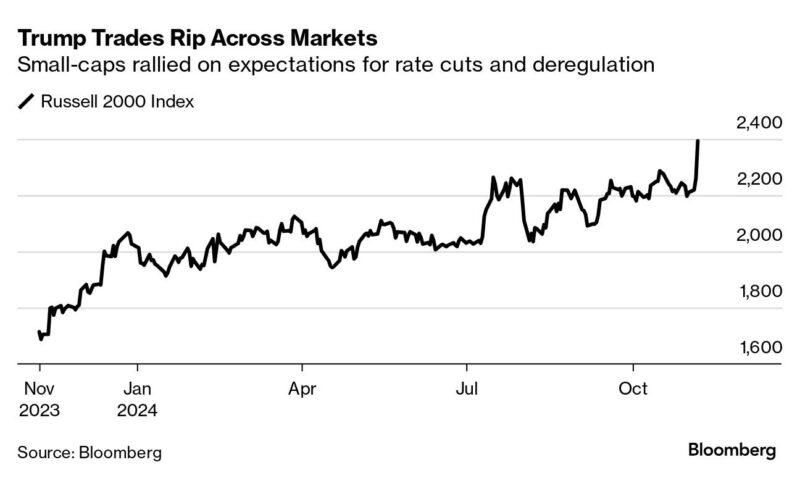Good Thursday AM from your Hometown Lender,
The dust is settling on the election just in time for the Fed to release its current policy statement in about 2hours.
I see the Fed cutting 25bos today (as did the Bank of England) and I currently see them also cutting in December. The fed funds rate is well over the neutral rate and despite the concern that Trump policies will be inflationary (and I think they will, initially), the Fed still needs to bring that funds rate down. Keep in mind that the Fed Funds Rate is the shortest of all rates on the yield curve and it does not directly correlate to what is happening in the mortgage market. It does though give us an idea of where the Fed is going and how the Fed sees the economy progressing. It will be interesting to hear Mr. Powell speak at 11:30 about their future plans but I don’t expect his to say much about the election or future policies which have not been put into place yet. As a quick note, if you recall the last time Mr. Trump was President, he wanted to fire Chairman Powell because he wouldn’t cut rates, I expect it to be groundhogs day in that arena.
For now, rate sheets this morning are recovering all of yesterday’s losses, wiping out any mortgage rate increases we saw after the elections. Reprice risk on the day though is high today, with the Fed meeting. We are likely to see bonds bounce around all afternoon, and we won’t know which direction rates are headed from here until the press conference.
Bloomberg had a good piece on the elections impact to markets…
What to expect today…
Markets have started to anticipate fewer 2025 Fed rate cuts, although still pricing in a high likelihood of at least one more cut in December. Before the election, the economy was on track for a soft landing with inflation falling down to the Fed’s target of 2% without a big spike in unemployment, even though the job market has shown some signs of weakness. However, now there is a whole new set of risks with Trump’s proposed policies expected to possibly drive up inflation. Markets will be looking for signs that the Fed is still on track to keep cutting, and may not react well to the idea that the Fed will likely be extra cautious heading into 2025 with so much uncertainty.
One immediate effect from Donald Trump’s election victory: Wall Street economists now see Fed policymakers keeping interest rates higher than they otherwise would have, given the likely inflationary effect of his policies.
The question is: will the stock market take fright? For now, it’s not a problem. An overwhelming majority of those surveyed by Bloomberg predict a 25-basis-point reduction today.
But JPMorgan’s economists now expect the Fed to lower rates every other meeting from March until it reaches 3.5%, compared with 3% earlier. Nomura’s team anticipate only one reduction in 2025, with monetary policy on hold until the inflation shock from tariffs has passed.

The bond market agrees that the inflation outlook has worsened:
The 10-year Treasury yield surged 16 basis points on Wednesday to about 4.43%, building on increases since mid-September as Trump’s chances improved.
Higher borrowing costs should be especially dangerous to an expensive stock market and also to small-caps, which are more indebted.
“There is one condition for US stocks to perform and it’s that bond yields remain at a reasonable level,” said Nicolas Forest, chief investment officer at Candriam. “If one stays below 4.5% for the 10-year, there’s nothing dramatic there, but beyond that would become a very different environment.”
This is the biggest source of tension baked into the Trump equity trades. The unifying theme is reflation: Economic expectations and inflation up, fiscal sustainability down, and that means higher-for-longer interest rates.
Of course, it’s not unusual for stocks to rise with bond yields — in fact, that has been happening for most of 2024. The explanation is typically that economic growth is expected to accelerate enough to offset higher interest rates.
But that depends on pro-corporate policies such as tax cuts and deregulation delivering an earnings boost that can overcome a drag from tariffs and mass deportation — or those latter proposals not getting implemented to any meaningful degree. That seems to the animating spirit behind yesterday’s stock market euphoria.
If that fundamental case doesn’t satisfy, there might also be a mechanical aspect to all this, like with most big market moves these days. The drop in volatility combined with the equity rally is likely a green light for some systematic strategies to pile in — and probably some previously uncertain humans too in the short run.
Looking beyond those short-term effects, equity investors may have to come to terms with a central bank that’s more hawkish.
Stay safe and make today great!!

